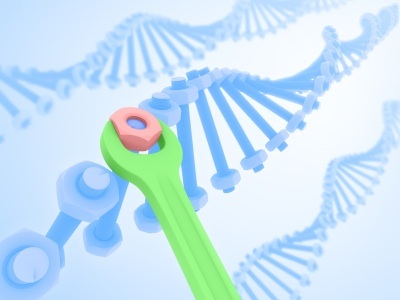Artery, or vein – that is the question
During embryonic development, endothelial progenitor cells that will become the body’s first artery and vein (the aorta and the cardinal vein) mingle in a single vascular structure. The signals that make some of the cells choose to become artery and some to become vein are not well understood.
Tao Zhong, Ph.D., and colleagues have now clarified the role of the Hedgehog (Hh) signaling pathway in artery-vein cell decisions during early zebrafish development. They report in the May 1 issue of Developmental Biology that endothelial progenitor cells must receive Hh signals to form the aorta – without Hh signaling, the cells become venous cells instead. Time-lapse imaging in vivo revealed two waves of migrating endothelial progenitor cells – the first wave formed the aorta, the second formed the cardinal vein. In embryos lacking Hh signaling, only the second wave occurred, with expansion of the cardinal vein.
Understanding Hh-dependent mechanisms that regulate artery-vein cell specification could lead to novel therapeutic strategies for coronary heart disease and cancer.
— Leigh MacMillan
Drug helps find DNA repair helper
The ability to repair DNA damage is essential to maintaining genome stability and protecting against mutations that cause cancer. Most cancers have some defect in the DNA damage response – a defect that can be exploited for purposes of targeted cancer therapies. A new class of targeted cancer therapies inhibits a DNA repair enzyme called PARP and preferentially kills cells defective in repairing double-strand DNA breaks.

iStockphoto.com
David Cortez, Ph.D., and colleagues used these PARP inhibitors to help identify genes that participate in the DNA damage response. In the May 7 Journal of Biological Chemistry, they identify USP11 as a participant in repairing double-strand DNA breaks. They also show that silencing USP11 makes cells hypersensitive to an experimental PARP inhibitor, ionizing radiation and several types of chemotherapy drugs.
The results establish USP11 as an important participant in DNA double-strand break repair and suggest that determining USP11 status of tumors might provide a biomarker to identify tumors that will respond to PARP inhibitors.
— Melissa Marino
Inflammation fighter lasts and lasts
Inflammation helps protect our bodies from invading pathogens. But when it goes awry, conditions like rheumatoid arthritis and sepsis (blood poisoning) can result. Proteins known as “suppressors of cytokine signaling” (SOCS) serve as natural “brakes” on inflammation, but they are often degraded before they can extinguish the inflammatory molecules.

Jacek Hawiger, M.D., Ph.D., and colleagues have developed CP-SOCS3, an engineered SOCS protein capable of penetrating into cells and arresting inflammation-induced organ injury. Now, Tynetta Fletcher, Ph.D., a Meharry Medical College graduate who conducted her thesis research in Hawiger’s lab, has demonstrated that this engineered protein lasts about nine times longer than the natural form of the protein. The researchers then altered the portion of the protein that targets it for degradation, dramatically increasing the protein’s half-life from 6.2 hours to 29 hours.
The findings reported in the June 11 Journal of Biological Chemistry suggest that this long-lasting CP-SOCS3 protein may be an attractive candidate for protein therapy approaches to treat or prevent inflammatory conditions.
— Melissa Marino
Who’s on the team?
Proteins rarely work in isolation. Instead, they team up with other proteins to accomplish their biological tasks. Identifying the members of an individual protein’s team – its “interactome” – promises to offer insight into the biological mechanisms of normal physiology and disease.
A.J. Baucum, Ph.D., and colleagues describe a new approach for defining protein interactomes in native tissues in the June issue of Molecular & Cellular Proteomics. The researchers used their proteomics-based approach to characterize proteins interacting with spinophilin – a brain protein with roles in synaptic signaling, learning and memory – in rodent brain samples. They identified multiple novel spinophilin-associated proteins and further characterized the interaction of spinophilin with two of these using biochemical and cell imaging studies.
The studies illustrate the importance of preparing samples appropriately, using multiple probes to isolate the protein of interest, and using tissue samples from knock-out animals (which lack the protein of interest) to rule out non-specific protein interactions. The approach can be applied broadly to characterize protein interactomes.
— Leigh MacMillan
We welcome suggestions for research to highlight in Aliquots. The items should be primary research articles (no reviews, editorials or commentaries) published within the last two months in a peer-reviewed journal. Please send the article citation (PDF if available) and any other feedback about the column to: aliquots@vanderbilt.edu.
Past Aliquots
June 22, 2012
June 8, 2012
May 11, 2012
April 27, 2012
April 13, 2012
March 30, 2012
March 16, 2012













